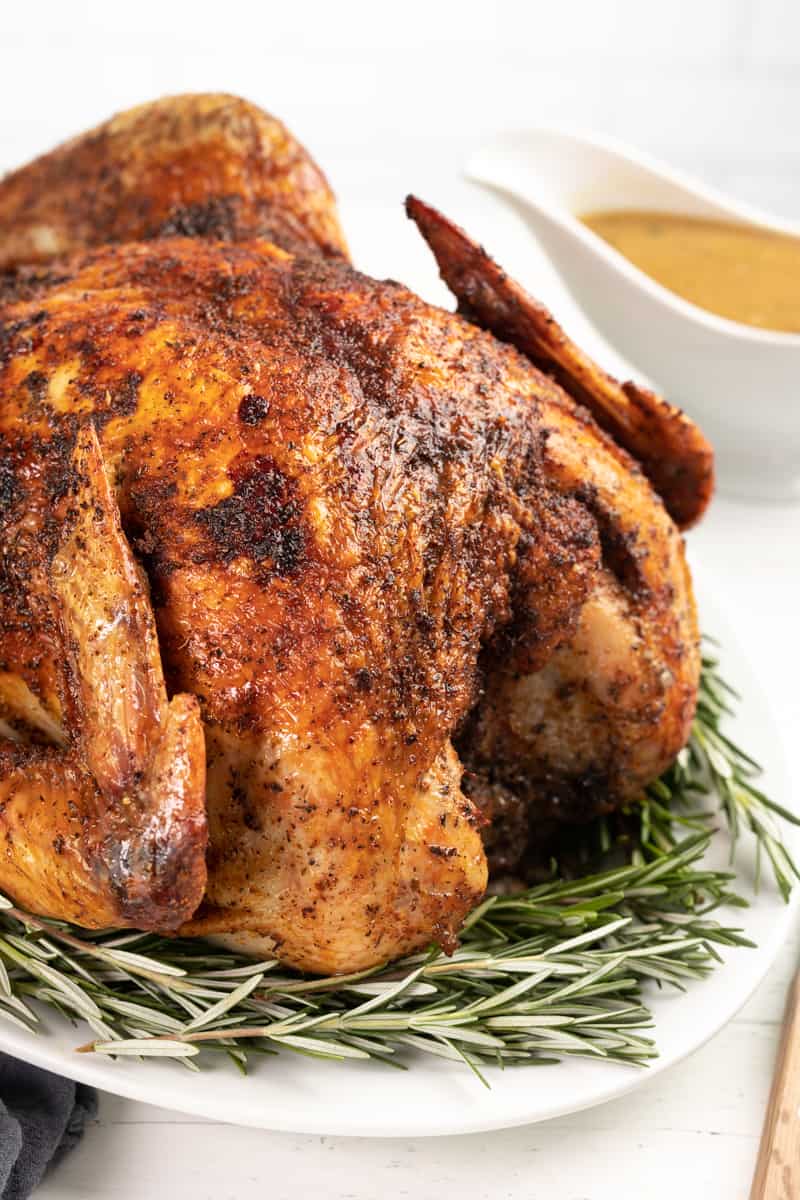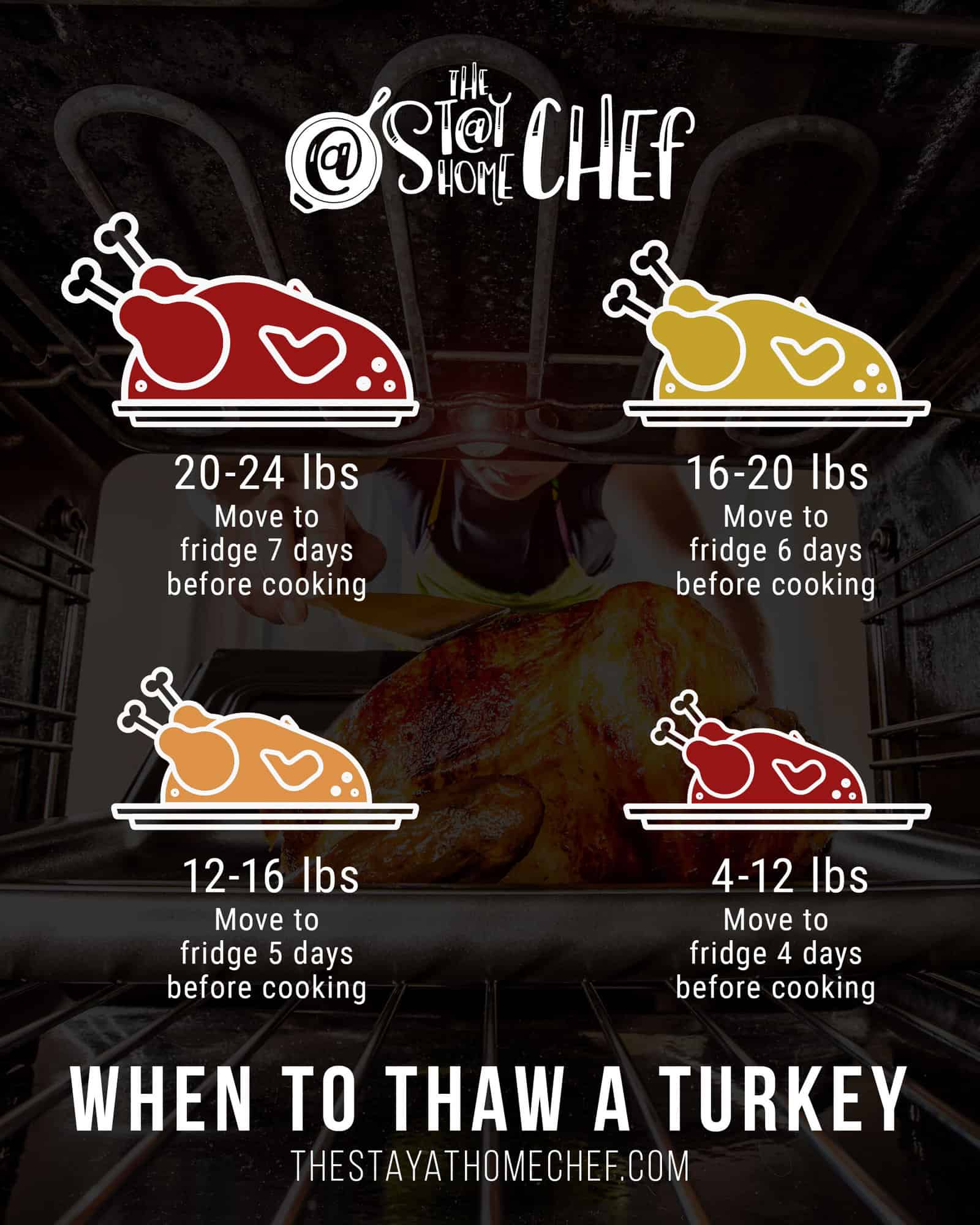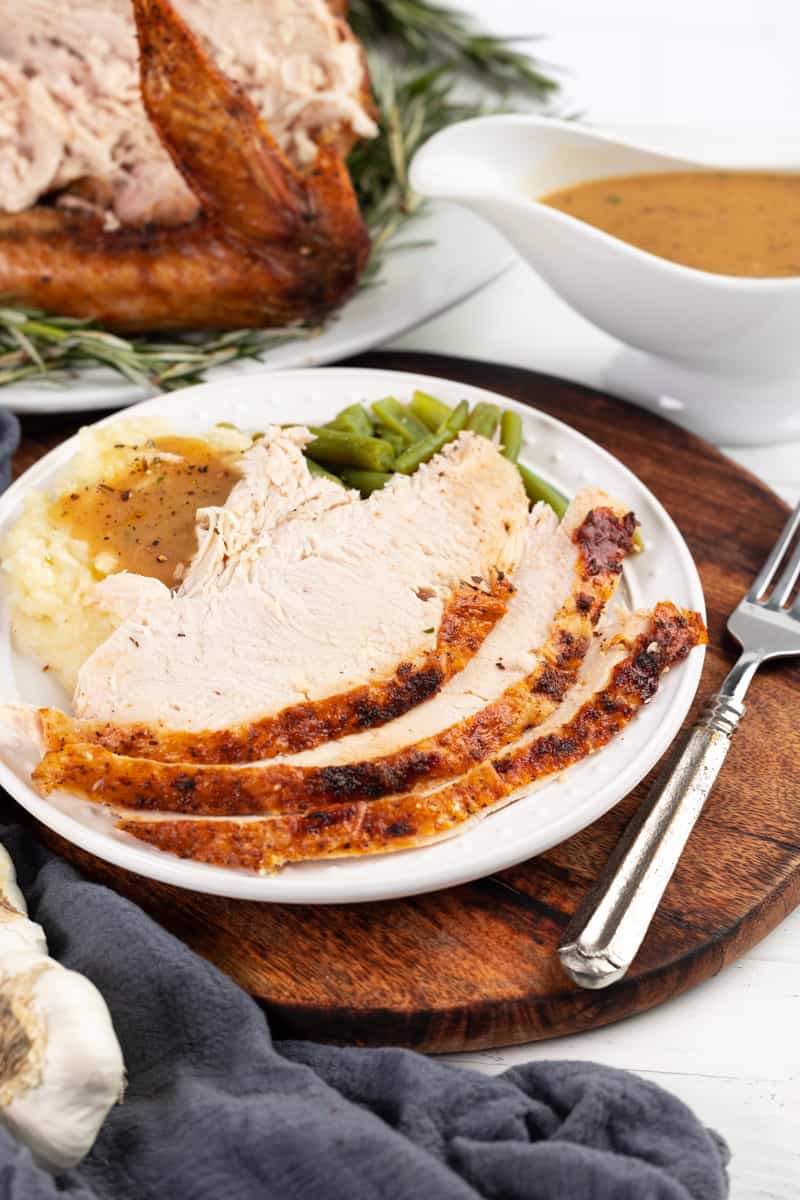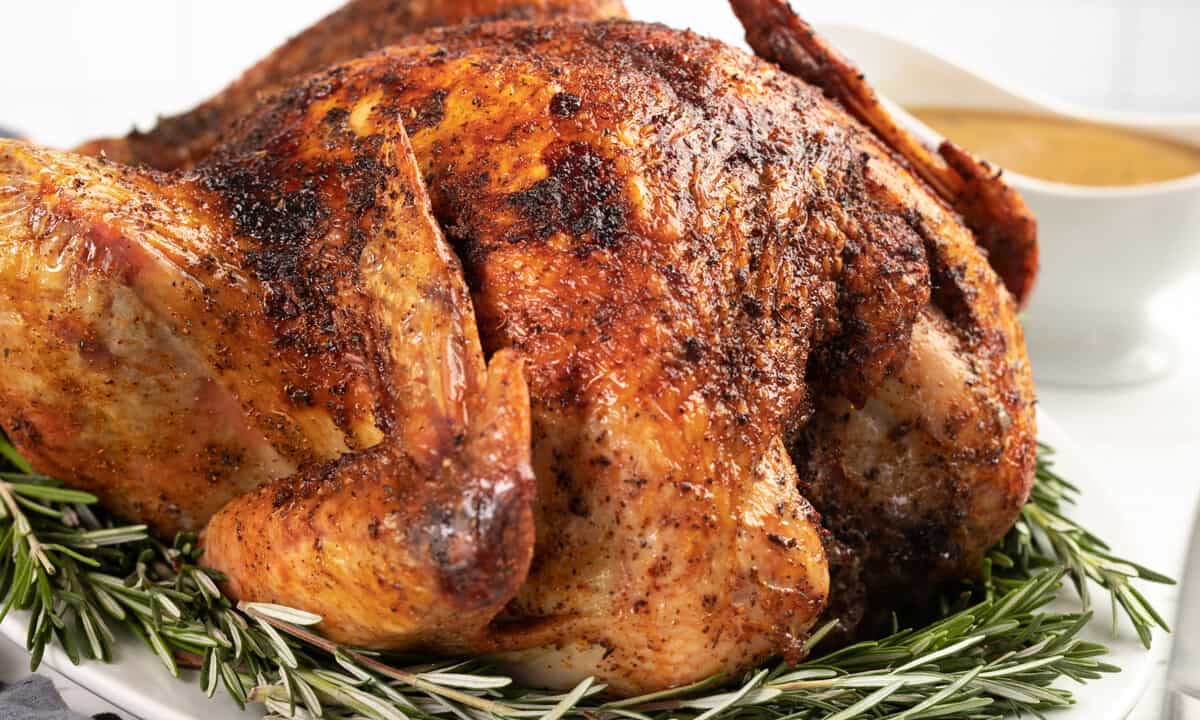Become the hero of your holiday party by serving up the juiciest turkey ever! This guide includes everything you need to know to make the best turkey you’ve ever had. You – and the whole family – are going to love it!

Thanksgiving and other winter celebrations are all about having a good time with family and friends, and — of course — digging into a home cooked meal. Turkey is the star of the show, and there’s nothing worse than spending the entire day in the kitchen only to end up with a dry and flavorless turkey. No need to worry, your guests will be completely obsessed with this turkey; you may even impress yourself while you’re at it. You don’t need to add much to your bird to make it shine, but there are a few key steps to keep in mind as you prep and bake. Our method includes icing the turkey breasts before you roast. It may sound silly, but trust us — it works wonders! Follow our recipe and you’ll be able to serve up a perfectly cooked turkey with juicy white meat and tender, fall-apart dark meat – year after year.
Thawing Tips:
To guarantee the juiciest turkey ever, you want to make sure that your turkey is completely thawed first. The USDA recommends thawing turkey in the fridge. Now, here’s where a bit of prep work needs to come in. Allow at least 1 day of thawing for every 4-5 pounds of turkey. To give you some perspective, that means that a 16-pound bird will take at least 4 days to thaw. It’s just one more reason to buy your frozen turkey at least 1 week in advance!

What To Do If You Forget To Thaw Your Turkey
Now, if you bought your turkey last minute – or forgot to move it to the fridge in time – there is another safe way to bring it to room temperature. Leave the bird in its plastic wrapping and place it in your sink. Fill the sink with cold water. Change the water every 30 minutes, allowing for 30 minutes of defrosting time per pound. Therefore, a 16-pound turkey will take about 8 hours to thaw.
Thermometers:
We recommend having a set of good thermometers on hand, one that can provide an instant reading and another for constant monitoring that can measure the internal temperature of your turkey while it is in the oven. For these purposes we strongly recommend the ThermoWorks Thermapen Mk4 as an excellent all-purpose instant-read thermometer. It’s extremely durable and provides a quick and accurate thermal reading you can rely on. The second thermometer we recommend is the ThermoWorks ChefAlarm. It is perfect for items that require accurate temperature reading over an extended period of time, making it great for roasting a turkey.
Internal Temperature Targets for the Juiciest Turkey Recipe Ever:
We have two targets that we are looking for with internal temperature. We want a different temperature for white meat than we want for our dark meat. For our white meat (breasts) we are looking for an internal temperature of 155 degrees Fahrenheit. For our dark meat (legs) we are looking for 175-180 degrees Fahrenheit. The higher temperature is to help breakdown extra connective tissue in the turkey’s legs, thighs, and wings.
How do I keep from over-cooking the white meat?
We highly recommend chilling the breast meat prior to roasting and letting your dark meat warm slightly at room temperature. To do this you’ll want to fill two plastic sandwich bags with ice and clip them together. Place them over the top of the turkey so that the bags hang directly onto the breasts. Let your turkey sit on the counter like this for 1 hour prior to roasting. The breasts will reduce in temperature and the dark meat will rise towards room temperature. This cool trick gives your dark meat a head start with the desired temperature differential when it’s time to roast, and it is perfectly food safe (see Food Safety below).
Food Safety:
It’s important to follow USDA recommendations for food safety, and we’ve got you covered in this recipe. There are a couple of important times and temperatures to keep in mind. Your turkey is safe to sit out at room temperature for a total of 4 hours. These 4 hours will include both before and after roasting as well as serving. This means it is completely safe for your turkey to sit out with the breasts under ice packs in order to chill the white meat and still leave you with 3 hours to work with to get your turkey into the oven, rested, and served.
The second safety number to keep in mind is that turkey meat is safe to eat when cooked to an internal temperature of 150 degrees if maintained for at least 5 minutes. Since our turkey will continue to maintain that temperature, and will even go up in temperature during the resting period, it is 100% safe to cook your white meat to only 150 or 155 degrees Fahrenheit in the oven before letting it rest.
Oven Temperature:
Traditionally, turkey is roasted starting at a higher temperature to blast it with heat and form a crust before the temperature is lowered. In order to get a more even cook on our turkey, and to keep the temperature balance between our dark and white meat, we recommend cooking at a consistent 350 degrees Fahrenheit the entire time.
To Baste or Not to Baste?
Basting is a traditional method for ensuring a juicy turkey, but does it really work?
PROS: Spooning the juices back over the turkey lets them seep down into the meat, providing a refresh of juices to the bird.
CONS: One of the main downsides to basting your turkey is that every time you open the oven door the ovens temperature goes down by as much as 50 degrees. Depending on your oven and how consistent it is at maintaining temperatures, it could take quite a while for it to recover.
If you decide to baste your turkey, limit your basting to two different times, evenly spaced during the cooking process.

Storage and Reheating Instructions:
Store any leftovers in an airtight container in the refrigerator for up to 4 days. You can shred or dice your leftover chicken to use in sandwiches if desired, or leave in whole pieces. Reheat individual slices in the microwave, covered, in 30-second increments until warmed through.
Alternatively you can reheat a larger amount in an oven preheated to 350 degrees Fahrenheit. Put your slices in a single layer in a baking pan, add a little broth and a pat of butter to keep it moist, and cover with aluminum foil. Bake until warmed through.
If you like this recipe, you may be interested in these delicious side dish recipes to go with it:
- Sweet Potato Casserole with Marshmallows
- Basic 3 Ingredient Cranberry Sauce
- Easy Green Bean Casserole
- The Creamiest Mashed Potatoes
Watch the video below where Rachel will walk you through every step of this recipe. Sometimes it helps to have a visual, and we’ve always got you covered with our cooking show. You can find the complete collection of recipes on YouTube, Facebook Watch, or our Facebook Page, or right here on our website with their corresponding recipes.



Yum! Perfect everytime
This turkey was amazingly moist. My family loved it!
Used this recipe before and so glad it’s posted again
Hii the ingredient amounts listed (for a serving size of “12” listed) – how much turkey is it for in lbs? It’s assuming a serving size of 12, but not sure how many lbs that is. Please advise how to adjust the ingredients if I’m making a 15 lb turkey.
For a bit larger of a turkey you are going to want to increase everything as I have done so here~
1 ¼ cup salted butter sliced
2 ½ teaspoons paprika
2 ½ teaspoons ground oregano
2 ½ teaspoons ground basil
2 ½ teaspoons salt
1 ¼ teaspoon black pepper
1 ¼ teaspoon onion powder
1 ¼ teaspoon garlic powder
Increase the cooking time by about 20-30 minutes but of course check internal temperature to ensure that it is safely cooked.
Great information. Very easy to follow. Thanks for the great tips.
The assumed 2 hour cooked time is for a turkey of how many pounds, please? I’m making a 15 lb turkey. Please advise, thank you!!
The recipe is for a turkey of 12-14 pounds. It should be very close to the same cooking time but give yourself a bit more time to ensure that it is safely cooked.
Your Thanksgiving recipes are the best!! We traditionally do the stuffing and green beans. Thank you so much for sharing!!